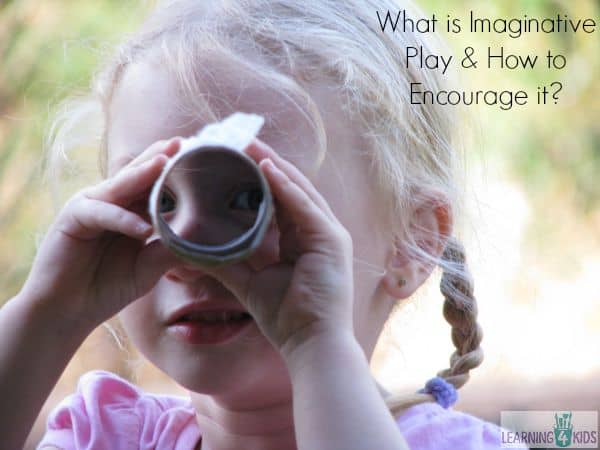
How to encourage and support imaginative play with our children?
Imaginative play is essentially when children are role playing and are acting out various experiences they may have had or something that is of some interest to them. They are experimenting with decision making on how to behave and are also practising their social skills. Children learn from experience: from what happens around them, from what they see, hear, smell, taste and touch. To absorb those experiences and make sense of the world, they need to be engaged in imaginary play.
We as adults can often under value imaginative play. Play is a child’s way of engaging and making sense of the world. Role play may appear to be a very simple activity, yet within it, young children learn practical life skills such as dressing themselves, how to cooperate and share with others.
A place to play
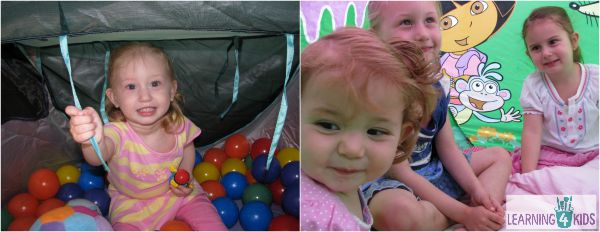
Provide your child with a space in your home for imaginative play. It could be a separate room or even just the corner of a room. Fixed or build-in wardrobes are great places for imaginative play.
Another great place for imaginative play is the dinner table, remove all the chairs and cover the table with sheets, it becomes an instant cubby house or even a castle where a beautiful princess is kept captive by an evil dragon.
Couches are another great place to begin imaginative play; again a sheet thrown over the couch can become a tunnel or a cave that an explorer needs to investigate. Canopies and play tents can create a great place to begin the imaginary world. The play corner or imaginative play area should be changed regularly with different props and toys to keep children stimulated by it.
Provide Props and Toys
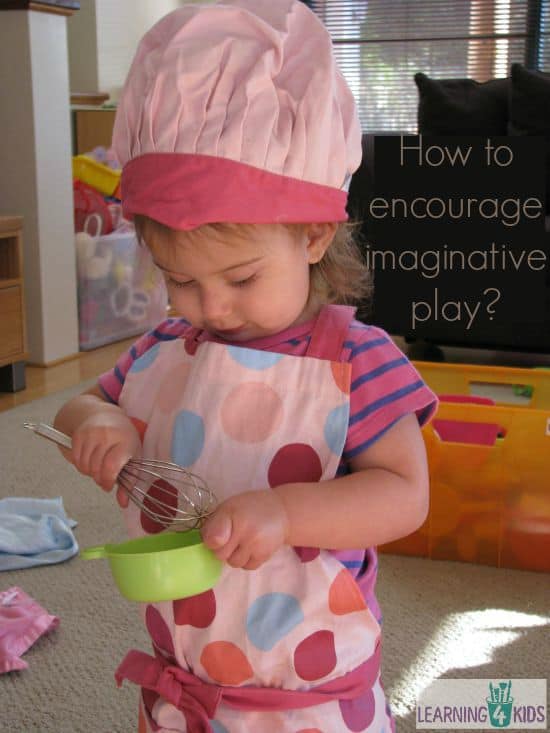
This does not mean that you have to go out and spend a lot of money on toys to help promote imaginary play. You will find that the most simple of items found in the home will act as perfect props to spark the imagination. Card board boxes can become anything in the imaginary world, I have seen them become computers, cash registers, and beds for sick animals. The plastics cupboard or drawer in the kitchen is filled with props that kids can re-invent them into other things.
Provide a dress ups box full of clothes, scarves, hats, handbags, shoes and wigs. Dress ups are irresistible to young children to spark the imagination. Consider creating a props box filled with toys, objects and props to encourage your child’s fantasy world. You might include: washing baskets, pretend plastic flowers, old telephones, stuffed animals and dolls, blankets, plastic crockery and cutlery.
Be your child’s playmate
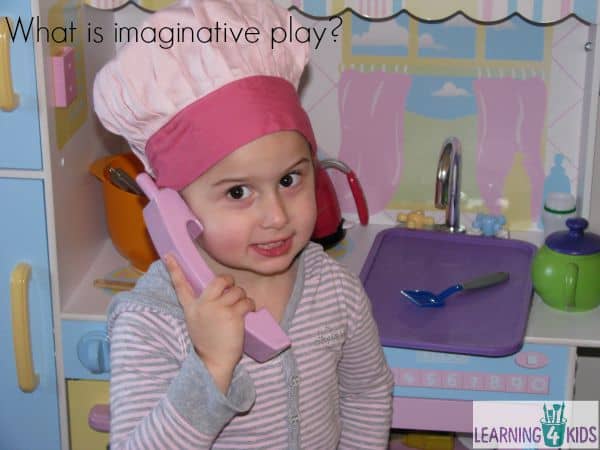
Kids love to play with their parents! When your child brings you a pretend cup of tea, play along and ask for a tea spoon of sugar. Ring them up on their pretend phone asking to put in an order for 2 large pizzas for delivery. Show an interest in what they are doing as this helps to develop the story and encourage the imagination but let your child be in charge. Arrange play dates with children of a similar age so they can support each other’s imaginative play.
Provide them with experiences to role play

Reading to your children will expose them to different scenarios, stories and experiences. Taking your children to many interesting places such as the zoo is also another way of exploring new experiences. This does happen naturally anyway, such as visiting the doctor and the supermarket. These will provide them with more experiences and more ideas for their imaginative play.
The learning benefits of Imaginative Play:
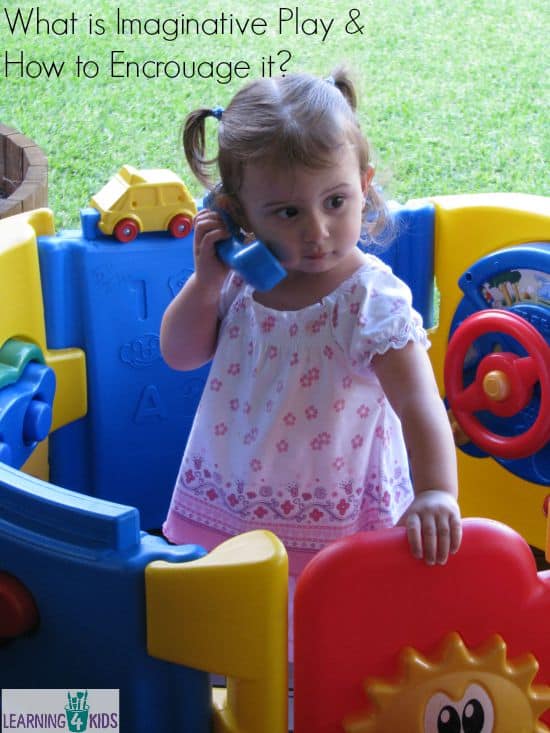
- It provides opportunities for children to identify with the adult world. Practise and role play their understanding and interpretation.
- Develop social skills: practising negotiation skills, turn taking and sharing. Provides opportunities for working out problems and experimenting with solutions.
- Emotional development: Understanding and expressing their feelings through the re-enactment of certain experiences. Taking on roles that encourage discipline and empathy.
- Encourages imagination: Children can be anyone and do anything in the pretend world.
- Develop language skills: practising listening, looking and talking. Being spoken to and talking with other people, also developing an understanding of what is being communicated through body language such as smiles and nodding.
- I also believe that imaginative play is a great way for children to relax and unwind from their busy lives.
I whole-heartedly believe that kids should be allowed to be kids! In our world today, it seems as if we get caught up in being busy and forget to have fun. Encouraging our children to play and have fun will develop healthy connections and choices in life.
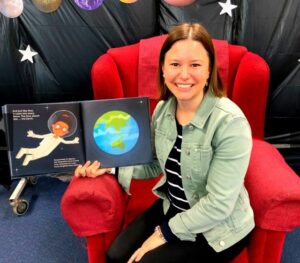
Great post. I love imaginative play and encourage my kids with this everyday!
excellent
Interesting article, Janice.
Imaginative play is one of the many areas of play that are critical to child development. Infants, toddlers and young children acquire developmental skills like fine and gross motor abilities and hand-eye coordination through contact with the real world, when they move and interact with their environment. Most skills can easily be learnt through play, which is a really natural way of development and growth. But parents tend to forget that aside from motor skills, ie. skills that relate to movement, children also need to develop their imagination, their logical thinking, and in other words, mental skills.
.